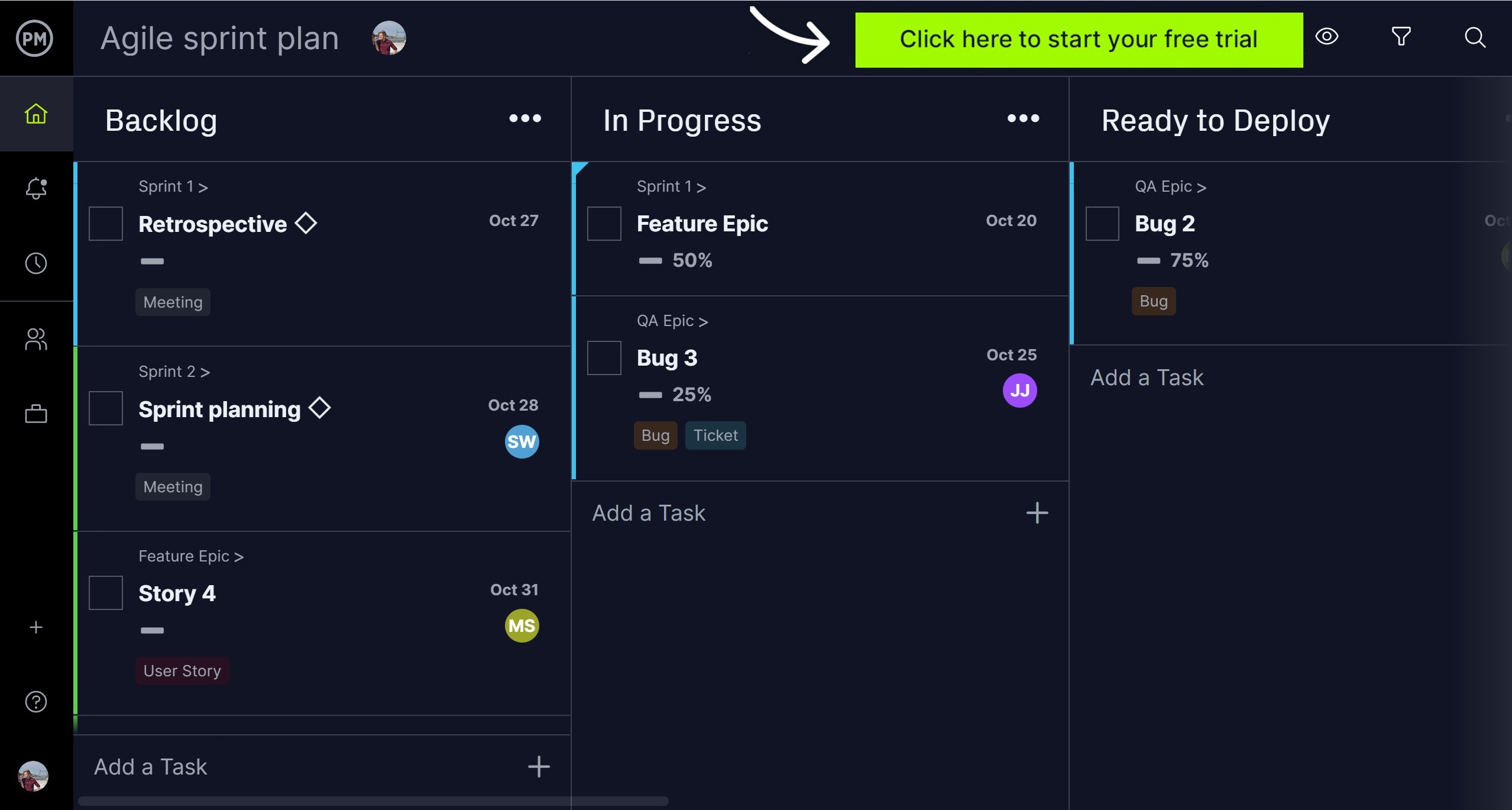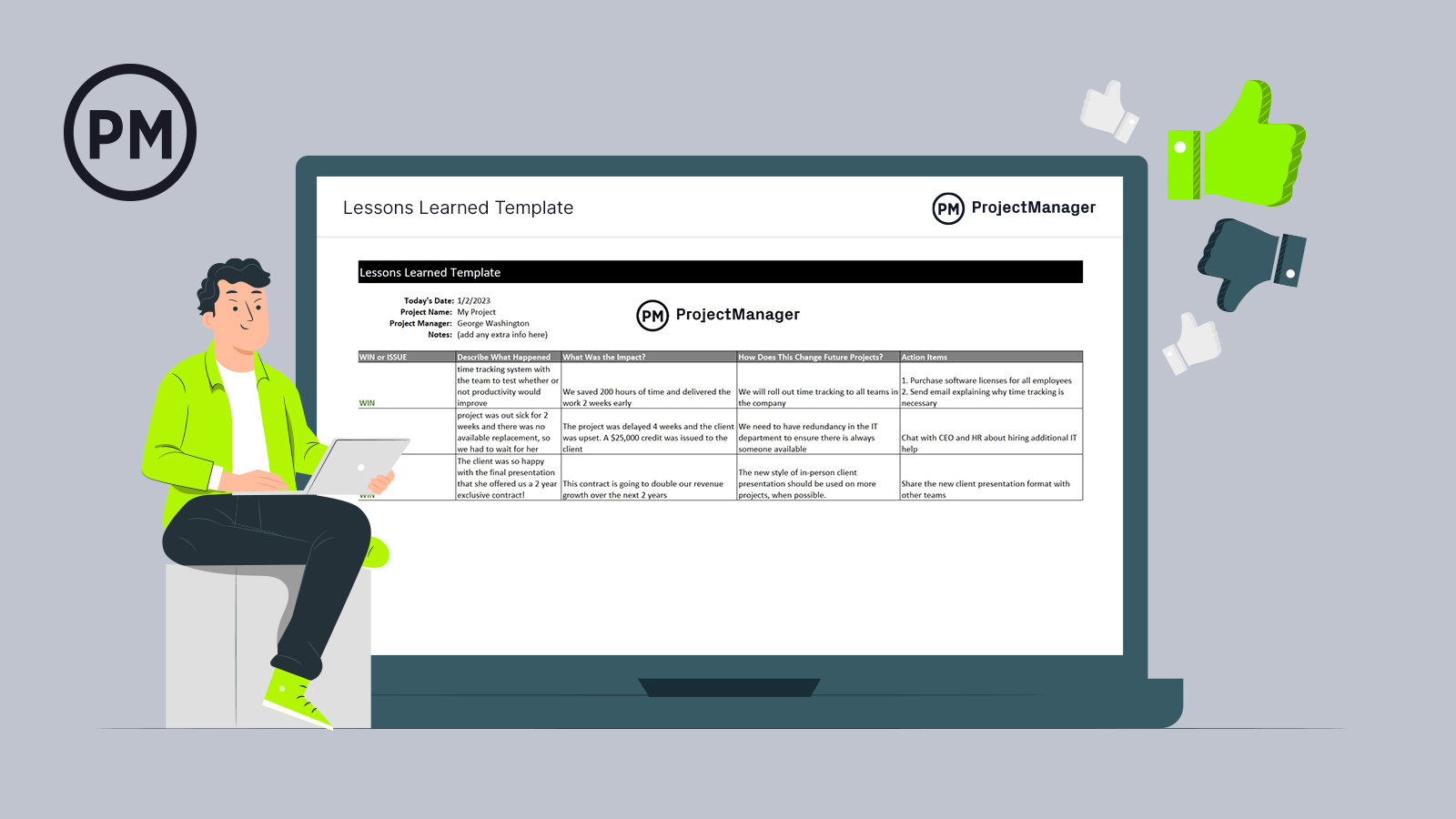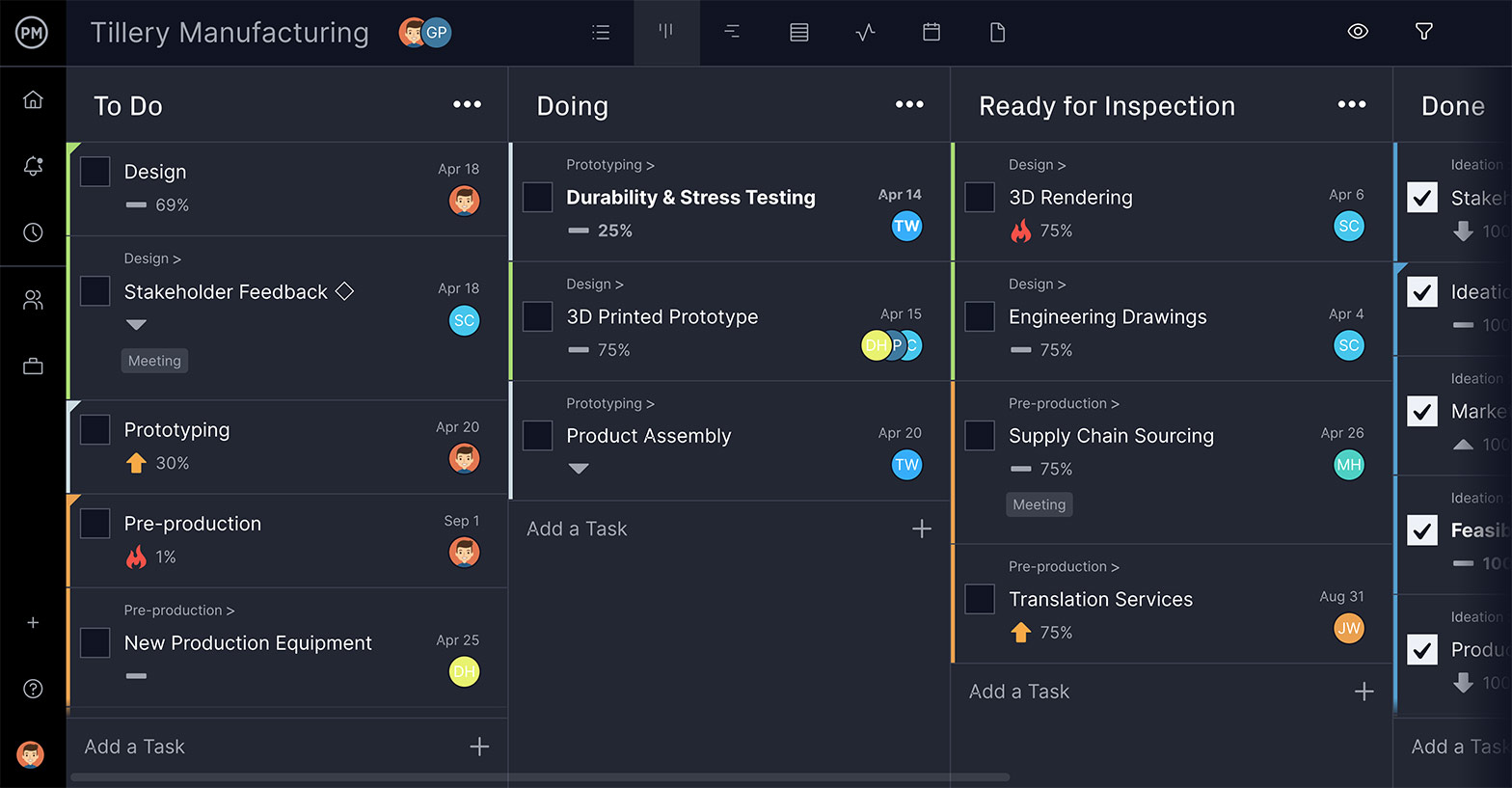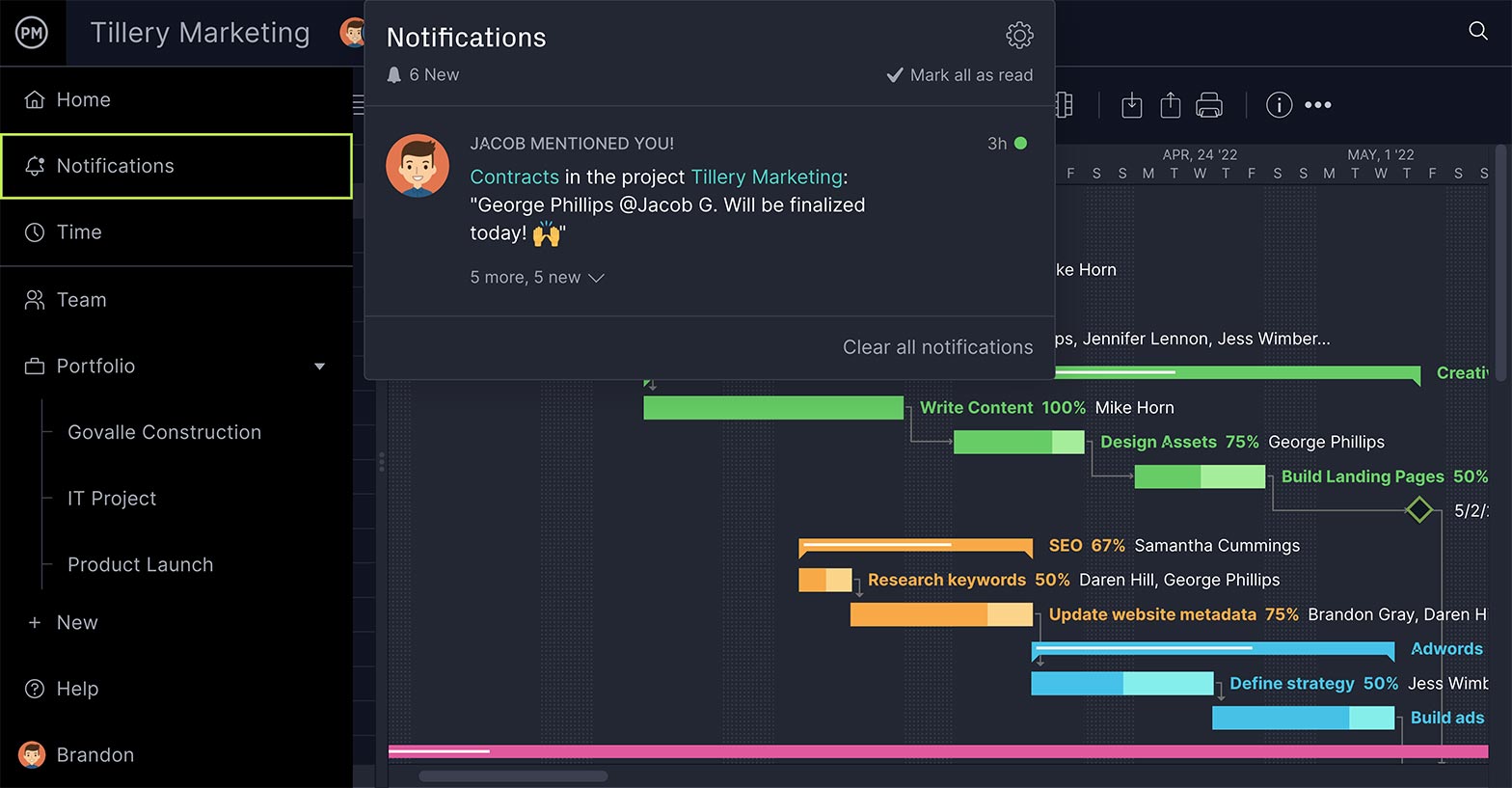Scrum is a flexible project management methodology that’s designed to help self-organized teams execute projects quickly in an agile environment. The scrum framework consists of artifacts, roles and ceremonies. These elements help product and software development teams manage their work.
Scrum artifacts are critical for the success of any scrum team. But before we learn how to use them, we need to define them first.
What Are Scrum Artifacts?
In software development, the term “artifact” refers to information that stakeholders and the scrum team use to describe a product that’s being developed.
Scrum artifacts define the work that must be done, and they always add value during a sprint. In simple terms, scrum artifacts can be seen as nuggets of vital information for the scrum team. They provide structure to the scrum process because they act as guidelines for the product development plan.
This is vitally important, especially for distributed teams who may work from home because it provides a platform where they can see how they’re doing on a particular sprint. This keeps everyone on the same page, no matter where they are.
Who Makes Scrum Artifacts?
Creating and maintaining scrum artifacts is a collective effort, and specific roles are accountable for different items. The product owner is responsible for creating and maintaining the product backlog, and the developers are responsible for the sprint backlog and the increment. The entire scrum team and stakeholders contribute to and use these scrum artifacts throughout the project.
ProjectManager is online work and project management software that connects hybrid teams. No matter where or when your scrum team works, they can share scrum artifacts in real time. Our kanban board makes it easy for scrum teams to manage their artifacts and then collaborate to plan sprints. Product owners get visibility into the process of reallocating resources to avoid bottlenecks.

Seven Scrum Artifacts
There are three main scrum artifacts, according to the scrum guide. We’ll explain each of them below, along with additional staples of any successful sprint.
1. Product Vision
The product vision is the long-term goal of the project or product. It is the artifact you will define to set the overall direction of the project or product. The scrum team will use the product vision as a guide.
The importance of the product vision is emphasized by the fact that the scrum team should know it by heart. That means it should be short and to the point. The product vision is something that should always be in the back of a scrum team’s mind.
2. Product Backlog
A product backlog is a list of everything that needs to be achieved on a project, broken down into individual items. This is where the baseline requirements of every feature needed for the end product are prioritized by the product owner for the scrum team.
It is not a list of unchangeable tasks, and it often evolves. For example, if there is a change in the business environment, marketing conditions or technical demands, the product backlog will reflect those changes. Product backlogs are usually represented using a scrum board.
The product backlog is made up of three different types of items.
- User stories, which are high-level descriptions of a feature, told from the perspective of the end-user of the product.
- Bugs are problems that arise that the product owner wants to be fixed.
- Tasks, which are assigned to the scrum team to complete.
The backlog grows as the product is being built. When changes are added they can include more detail, estimates or a change in priority. The product owner and the team are regularly working on refining the product backlog. This can occur at any time.
The more important the product backlog item, the more detailed it is. When the items in the product backlog are chosen for the next iterative sprint, they are further refined to be developed during the sprint. When the item on the product backlog can be delivered by the team in one sprint, then they are ready for a sprint planning meeting.
Refining the Product Backlog
Refining the product backlog includes activities such as reviewing the user stories of the highest priority at the top of the backlog, and asking the product owner questions about them. This includes, if necessary, deleting user stories and then writing new ones. This is followed by reprioritizing the product backlog.
Then these new user stories need to be estimated in terms of the time it will take to complete them, or others will need to get a new estimate of their duration. Other user stories should be prepared for future sprints, while not losing sight of the big picture of the product architecture as the backlog evolves.
3. Sprint Vision
The sprint vision or sprint goal is often not defined as an artifact, it is still an important part of the scrum framework. The sprint vision is what the scrum team comes up with when planning a sprint. It guides the scrum team as to why they are investing their time, money and effort in the sprint.
4. Sprint Backlog
The sprint backlog is the part of the product backlog that the team will be working on in their sprint. Think of it as the to-do list for the sprint.
The sprint backlog is further broken down into tasks for the team to execute. Every item on the sprint backlog needs to get developed, tested and documented. The product owner helps the scrum team come up with a sprint backlog during their sprint meeting.
The sprint backlog is often represented as a task board, which is broken up into columns that represent the workflow. They tend to have the following titles:
- To-Do, which are tasks that have yet to start
- Doing, where the work has begun
- To Verify, which are completed tasks that are waiting for verification by another scrum team member
- Done, which means no more work is required
Refining the Sprint Backlog
The sprint backlog, like the product backlog, is a living document and can be changed by the scrum team. Work is discussed regularly at the daily scrum and the sprint backlog is modified as needed. This is all happening during the short sprint, and only the scrum team can make these changes as they occur during the sprint.
If there is a requirement for new work, it is added to the sprint backlog. Then as the work is completed, the estimate for what work remains to be done is updated. If there are items that become unnecessary, they are removed. This is known as backlog refining.
But, again, only the scrum team can do this. They have ownership over the sprint backlog and this process. The sprint backlog is highly visible and provides a picture of the sprint as the team is working on it.
5. Definition of Done (DOD)
The definition of done (DOD) means that all aspects of a user story have been completed in a sprint backlog. The scrum team must have a shared idea of what being done means. They should create a definition of done and use this as a checklist as they work on their user stories.
The scrum team can create their DOD during the first sprint planning. It can then be iterated on during their sprint retrospectives. That doesn’t mean a DOD is static. It can change dramatically throughout the project.
6. Product Increment
This is the most important scrum artifact. The product increment is all the product backlog items that have been completed during a sprint.
Each sprint is potentially creating shippable product increments, and so the product increment must fit into the team’s definition of done and be acceptable to the product owner.
The definition of done is a shared one among the scrum team, although it is different for each scrum team. The definition of done evolves as the team matures: it grows more expansive or stringent as the project continues.
The product increment is not only the sum of all the project backlog items completed throughout a sprint, but it is also the value of the increments over the last number of completed sprints. This is transparency not only for the team but for the stakeholders in terms of where the product is at the moment.

Get your free
Lessons Learned Template
Use this free Lessons Learned Template for Excel to manage your projects better.
7. Burndown Chart
Though not always considered part of the essential scrum artifacts, the burndown chart is important not to neglect. It is a graphic that shows how fast the team is completing the user stories or items on the product backlog. Therefore, a burndown chart illustrates the total effort against the amount of work for a sprint.
The purpose of a burndown chart is to make sure that the project is staying on track, and that the deliverable is going to meet expectations and arrive on schedule.
The rate of progress of a scrum team is called velocity, which is the number of story points in the user story that have been completed during the sprint. Partially finished work isn’t calculated into velocity.
How to Use Scrum Artifacts
Scrum artifacts improve transparency and adaptation in a scrum framework. Here is how each artifact is used.
Product Backlog
The product backlog is a living document that captures everything that might be needed in the product. The product owner, alongside the developers, will regularly define the backlog, such as adding new items or providing estimates to understand the size and complexity of the work. The backlog also helps guide what developers will work on in future sprints.
Sprint Backlog
The sprint backlog is a plan that developers create for how they will achieve the sprint goal and make the increment during the sprint. It’s a versatile and real-time picture of the work that the developers aim to accomplish during the sprint. Developers select project backlog items and break them down into smaller, actionable tasks. It offers a clear overview for the team of who is working on what and what items in the sprint are remaining.
Product Increment
The increment is a scrum artifact that acts as a stepping stone toward the product goal. It’s the sum of all the product backlog items completed during a sprint and all previous sprints. The developers create it during the spring backlog to ensure quality. It’s presented to the product owner and stakeholders during the sprint review, where feedback is provided.
Benefits of Scrum Artifacts
Numerous benefits stem from scrum artifacts, helping the scrum team and the overall project. They allow for enhanced transparency and a shared understanding for everyone involved. This minimizes misunderstandings and ensures everyone is aligned on the product vision, goals and progress. It outlines what needs to be done and can show the tangible results of the team’s efforts.
ProjectManager for Scrum Teams
ProjectManager has the features that scrum teams need to easily manage their scrum artifacts. Because it is a cloud-based project management software, it’s especially convenient for remote teams, who can stay in the project loop no matter where they are or when they’re working.
Multiple Ways to Manage a Project
There are multiple project views in ProjectManager, making it flexible enough to serve agile teams, teams who work in a more traditional methodology and even a hybrid of the two. The kanban board view is ideal for scrum teams.
Product backlog items can be collected in kanban cards that can be tagged, due dates added, progress tracked, and assigned to one or more team members.

ProjectManager also has unlimited file storage, so goals, user stories and other related sprint materials can be attached to the cards. It’s the perfect tool to manage your product backlog.
Have Easy Backlog Grooming
The kanban board can also be used for the sprint backlog. Columns are customizable to fit the way your team works. Cards can be dragged and dropped from one column to the next as they move through the workflow.
Cards can have personalized to-do lists, and team members can collaborate by commenting on the card. They can even tag the product owner or scrum master, who will get notified by email and brought into the conversation. This provides great transparency for the whole scrum team.

Use Real-Time Tracking
Instead of using a simple burndown chart, ProjectManager calculates your sprint velocity automatically by tracking six project metrics, which are fed instantly to the real-time dashboard. Product owners can monitor task progress, team workload, cost and more to make sure that the sprint is on track.

Free your teams with custom workflows to focus on what matters. Automate busywork by setting triggers that create actions and streamline your sprint. Add task approvals to make sure only those authorized to change the status of a user story can do so. ProjectManager is also collaborative to the core with automated email notifications and in-app alerts. There’s a single source of truth that keeps everyone on the scrum team on the same page. Get more productive today by trying ProjectManager for free.
ProjectManager is online project management software that helps scrum teams better manage their sprints and product owners control the backlog. A real-time dashboard acts as your burndown chart, so you always know where you are in the project as it’s happening. See what else ProjectManager can do for your scrum team by taking this free 30-day trial today.

